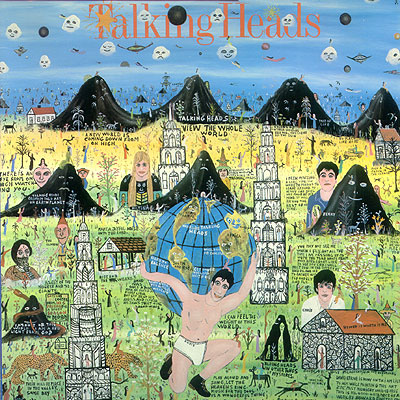UPDATE 1:45 PM EDT: A few links are surfacing that are pretty authentic about Apple’s new digital device, the iPod: a Firewire capable, ultraslim, hard disk based digital music player. Plus version 2 of my favorite Mac application, iTunes… Here’s the MacCentral coverage. Finally Apple’s page on the device is up. And you can get it at the Apple store.
First things first: a prayer request for an old family friend, Berkeley Brandt, who (as reported by Esta) suffered a stroke over the weekend–he’s 30 with a wife and two children.
In less sad news, as pointed out by my fellow Virginia alum Tim Fox, there are still drunken confrontations aplenty in Charlottesville. Of particular note:
According to police, as the students rounded the apartment building, they heard the sound of a weapon being racked. At this time they saw Dixon who pointed a long gun at them and said, “Boy where you going? I’ll f—ing shoot you.”
Some students fled at the sight of the weapon. Others, thinking Dixon only held an air gun, stood their ground, some pulling shirts over their faces for protection, and told him to go ahead and fire, police said.
A few of us were discussing this on an email list. I put forward the question, “were the fraternity kids in question [Douglas] Adams fans or just dumber than a box of hammers??” Fortunately for all of us Erik Simpson knew the answer to that:
First, the lads were not Douglas Adams fans. They could not answer even the most basic questions about Mr. Adams or his work. That part was easy.
Ha-HA! you say. They are therefore dumber than a box of hammers!
That, it turns out, is only partially true. We know, aswim as we are in the most enlightened notions of our day, that we cannot rank the intelligence of people (or groups of fraternal Wahoos or boxes of hammers) on a simple linear scale. We must instead evaluate multiple, independent kinds of intelligence.
First, you should know that Mr. Jarrett’s box of hammers, which I found in the back closet of his trendy Cambridge pad, is a rough-hewn pine box, about 18 inches by 12 by 8, and it contiains five hammers ranging from a tiny plastic toy hammer to a large Craftsman (TM) carpenter’s claw-headed job. The others are a ball-peen hammer, an artist’s mallet, and a small jeweler’s hammer. The specific identities of the fraternal Wahoos are much less important, of course, because they’re all pretty much the same. Statistically speaking.
Given the story about the gun and the T-shirts, you would probably guess that the hammers outstrip the Wahoos in spatial/mechanical intelligence. Boy, do they. In that area, even the tiny plastic toy hammer proved vastly more intelligent than all of the Wahoos. The only category the hammers dominated more convincingly was that of emotional intelligence.
The Wahoos, however, proved marginally more adept than their inanimate counterparts at answering basic math problems. They also demonstrated significantly larger vocabularies (when asked the right sort of questions, at any rate), and they generally carried the day in visual memory and musical aptitude as well. A prominent exception: none of the Wahoos could carry a tune like the ball-peen hammer.
I could go on, but you get the picture: in the specific kind of intelligence at work in the story, yes, the students involved were clearly dumber than Mr. Timothy O. Jarrett’s box of hammers, and the difference meets all standards of statistical significance. Overall, however, we can only say that the hammers and the Wahoos have different strengths and weaknesse. If anything, the students are on the whole roughly *as dumb* as the box of hammers but not demonstrably dumber. And we should point out that–as we would all expect–Mr. Timothy O. Jarrett’s box of hammers is remarkably bright as boxes of hammers go.


